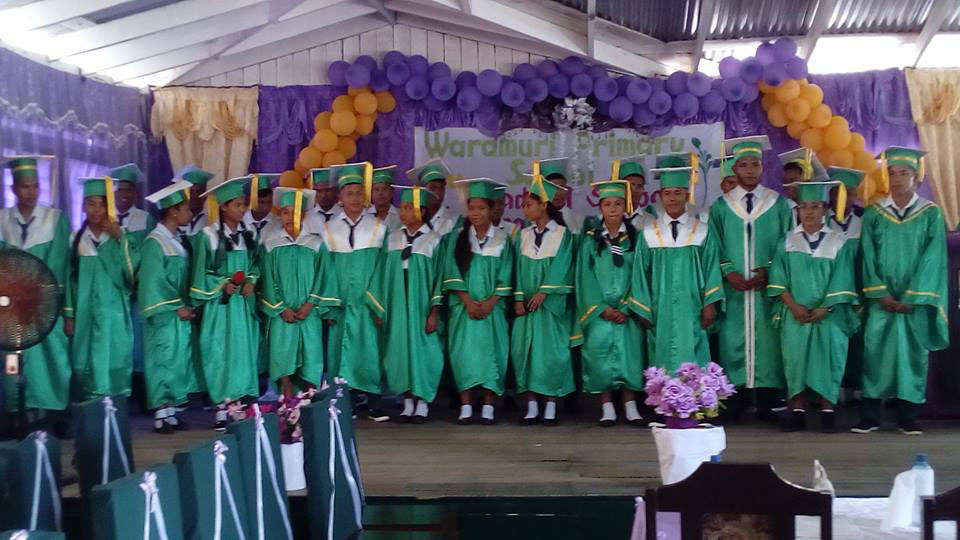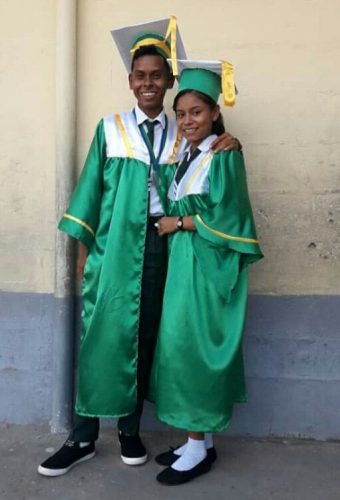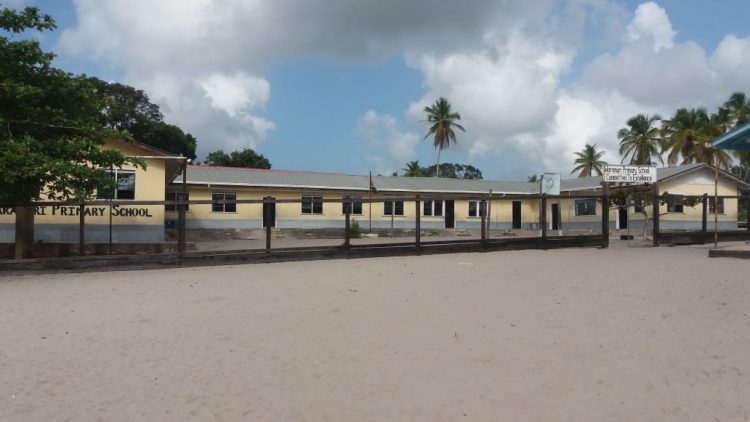Waramuri Primary Top also known as the secondary department of Waramuri Primary School in Moruca, Region One (Barima/Waini) has produced seven of the ten top students in the Moruca sub-region at this year’s sitting of the Caribbean Secondary Education Certificate examinations, each having passed ten subjects – including double awards for agriculture – with grades one to three.
The students are also among the top batch in Region One.
With the exception of two secondary-trained agricultural science teachers, the students were taught primarily by primary-trained teachers.
“I am very pleased with the results and we look forward to pushing the percentage passes upwards,” said head teacher Colin De La Cruz.
Kedolph Castello, who was the school’s top student gained three grade ones, four grade twos and two grade threes. The others are Kelon Vincent – two grade ones, seven grade twos; Shania Gonsalves – one grade one, eight grade twos; Devin Williams – two grade ones, six grade twos and a grade three; Mickel Williams – a grade one, six grade twos, two grade threes; Cavita de La Cruz – a grade one, five grade twos, three grade threes and Yasmin Ally – a grade one, five grade twos and two grade threes.
Of the lot, four who applied to do programmes at the University of Guyana have been accepted. Vincent and Devin Williams will be pursuing associate degrees in engineering while De La Cruz will be pursuing communication studies and Gonsalves, social work.
This year was the first time that the primary top allowed some students to write nine subjects including the double award subject, De La Cruz said. In 2012 the school, which started off with seven students in 2012 writing five subjects, recorded 50 per cent passes and at the time it had no trained secondary teacher.
“We have students who wrote eight, seven, six and five subjects and they passed them all with Grades one to three,” he said.
This year 31 students wrote the CSEC examinations in which mathematics and English A were compulsory.
Waramuri Primary Top recorded 52 per cent passes in mathematics with grades one to three while the national average was 43.9 per cent, and 90 per cent passes in English A while the national average was 67.14 per cent passes in grades one to three. Three students passed mathematics with Grade Ones and three also passed English A with grade ones.
This was also the first time that the school sent up students to write electronic document preparation and management (EDPM) which is part of the information technology programme, De La Cruz said. “We have no computer lab but seven out of the 31 students wrote EDPM and we had 100 passes – five grade ones, one grade two and a grade three.”
De La Cruz, who is himself a primary trained teacher, told Stabroek News that the school’s teaching staff are primarily, primary-trained with the exception of two trained agricultural science teachers.
As the primary top is not a discrete secondary school, Waramuri students were allowed to write the CSEC exams using as its centre, Santa Rosa Secondary School in the neighbouring village of Santa Rosa.
“When we extracted our results from Santa Rosa Secondary, our grades one to three percentage passes was 78.3 per cent. It was the highest percentage passes in Region One – better than the established secondary schools,” De La Cruz said.
It was not as easy as it appears to be, De La Cruz said as many of the students come from other riverain neighbouring communities like Lower Manawarin, Pimpla Creek, Lower and Upper Haimaracabra Creek and Para, which are only accessible by boats. The Department of Education has provided a boat for the students from Lower Manawarin and Pimpla Creek which is about eight miles away.
In addition to students who live at Waramuri Mission and who walk to school, he said, “Those students from the outlying communities travel to school every day, sun or rain.”
In the past, he said, “many students from the outlying areas would have been sent to Santa Rosa Secondary School (SRSS) where they would stay in the dormitories. Some still go to SRSS because of the dorms but ideally a secondary school at Waramuri would be closer to them. It would cut out half or more than half of the distance for students.” The primary top now has about 250 students.
De La Cruz is himself from Santa Rosa, and he was among the first batch of students to attend the Santa Rosa Secondary School which opened its doors in 1991. Being in that pioneering batch, he said, would have played a big role in helping him to manage the primary top to rival his alma mater.
The school has not only been doing well in academics but also in sports. In the last regional under 15 schools football competition, De La Cruz said, “We won the championship. We beat all the big schools like Santa Rosa Secondary, North West Secondary and Port Kaituma Secondary. We played unbeaten.”









